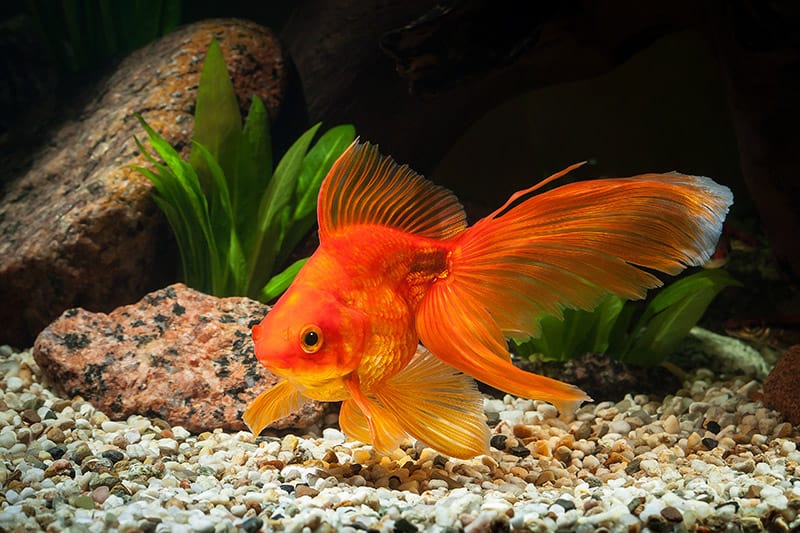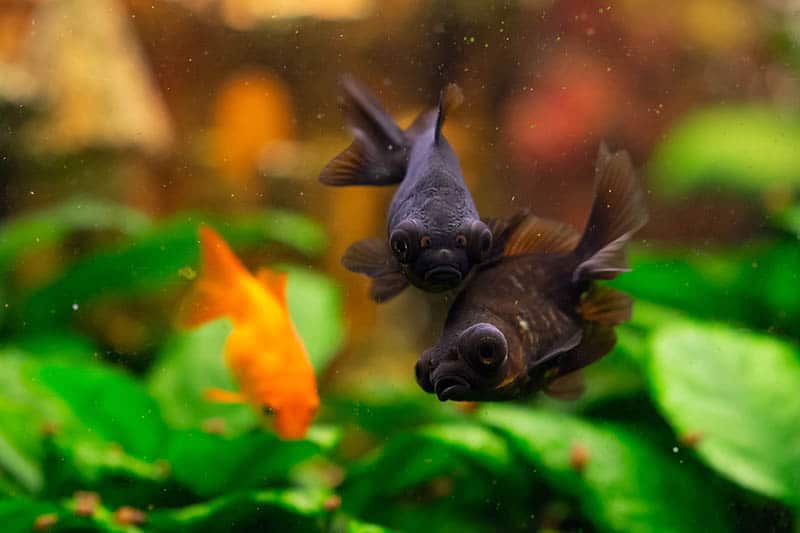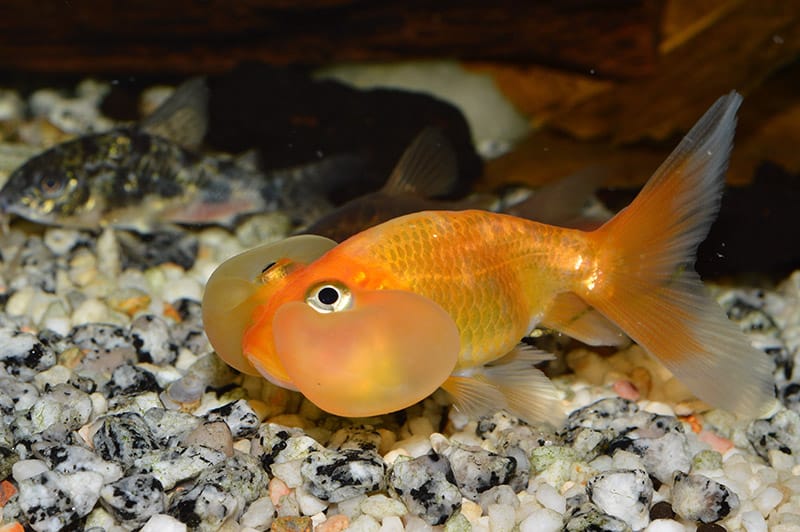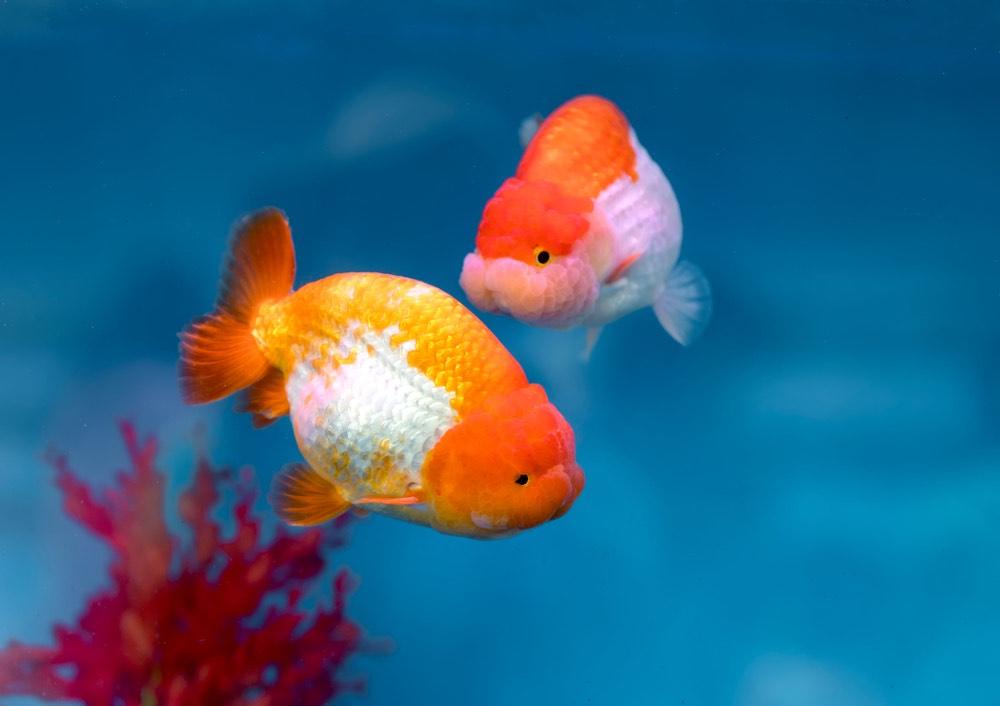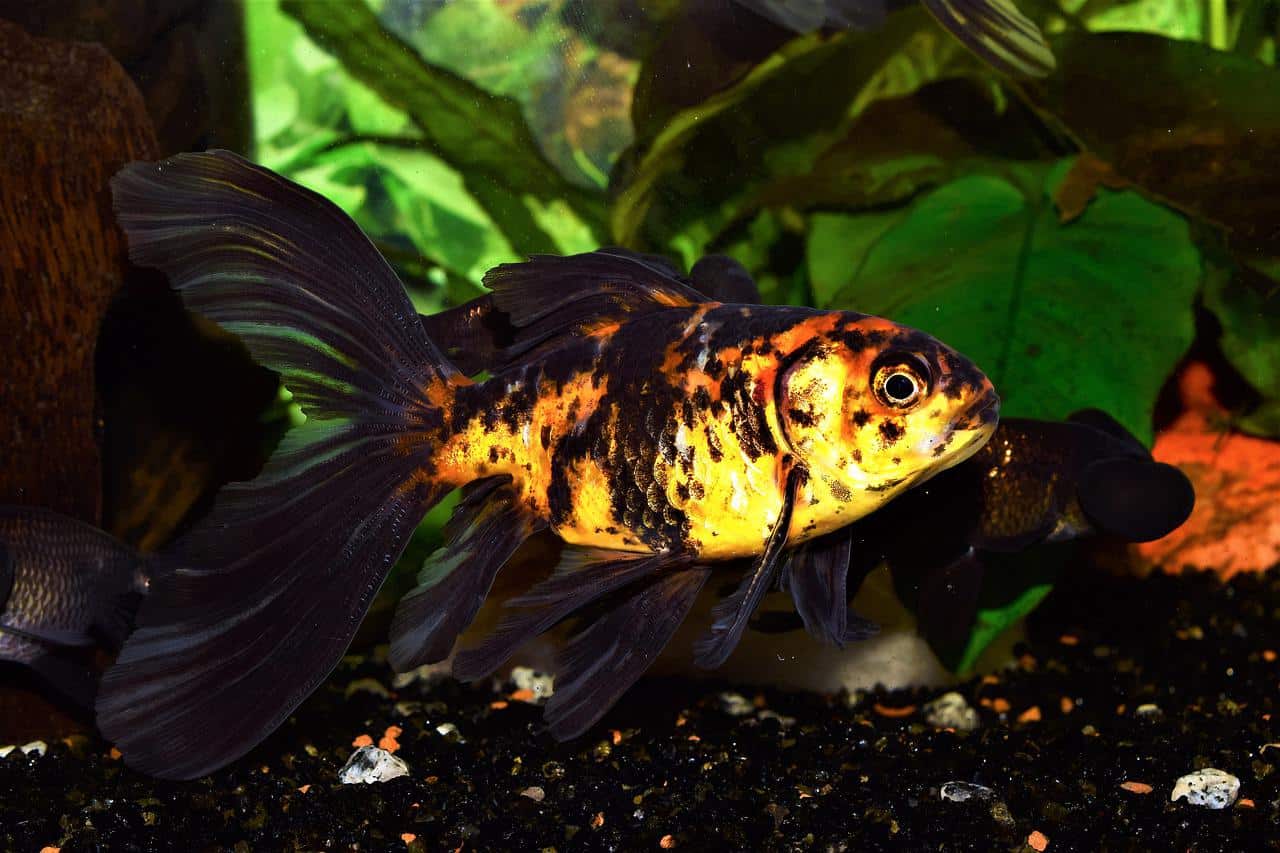Goldfish are one of the all-time favorite fish of aquarists everywhere!
Goldfish are very popular today and have been for hundreds of years. Not only are they beautiful and fun to watch but they have good memories and can become very sociable with their keepers. The average life span of the common goldfish is over 20 years and some have been known to live up to 32 years. Most of the commonly available goldfish varieties are also relatively easy to care for.
Originating in Asia (Siberia), goldfish are one of the first aquatic animals in recorded history to be kept as pets. The majority of the fancy goldfish varieties available today were developed by Asian breeders. There are currently over 125 types of goldfish. Goldfish can have many interesting forms, are available in a wide of beautiful colors, and can be metallic, iridescent, or flat.
Many goldfish types are very hardy, especially the Common Goldfish and the Comet Goldfish. These two are great for beginners. The Fantail Goldfish and Shubunkin Goldfish are also good beginner fish. Other hardier types include the Black Moor Goldfish and the Ryukin Goldfish. Once you’ve gained experience and confidence in keeping these hardier goldfish, try some of the more delicate, fancy goldfish like the Bubble-eye Goldfish, Celestial Goldfish, Oranda Goldfish, or Lionhead.
The Goldfish types listed below include both popular goldfish and lesser-known goldfish varieties. Each fish guide has a description of the goldfish, its place of origin, habitats, and behaviors, as well as goldfish care to successfully maintain them in aquariums or ponds. Pictures of each fish help with identification and aid in choosing the best type of goldfish for your freshwater tank.
- For information on taking care of goldfish, see: Goldfish Care: Common and Fancy Goldfish, Goldfish Diseases
Goldfish
Pearlscale Goldfish
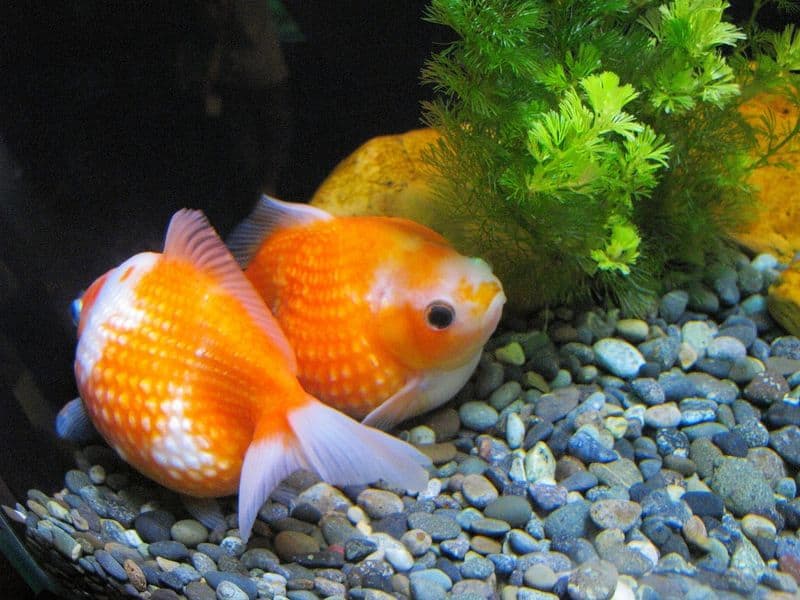
Carassius auratus auratus
Goldfish Facts
The goldfish available in pet stores today are descendants of a wild carp fish, known by such names as the Prussian Carp, Silver Prussian carp, or Gibel Carp Carassius gibelio (syn: Carassius auratus gibelio).For many years, goldfish were believed to have originated from either the Crucian Carp or Golden Carp Carassius auratus auratus described by Linnaeus in 1758. However, recent research points toward the former.
Goldfish were originally developed in China and were exported to Japan in the 1500s. They arrived in Europe in the 1600s and made their way to America in the 1800s. These countries developed them into the wondrous variety of goldfish colors and forms we see today. The majority of the fancy goldfish have been developed by Asian breeders. Today, there are over 125 types of goldfish.
Goldfish Care
People often start out keeping goldfish in small 1 or 2-gallon bowls with no heater or filtration. But for the best long-term success in keeping both common and fancy goldfish, aquarists should invest in an aquarium. In an aquarium, you can provide your pet goldfish with the same filtration, especially biological filtration, that other aquarium residents enjoy, and your goldfish should live long, healthy lives.
Goldfish are cold-water fish and do best at temperatures between 18°-22° C (65°-72° F). Several of these durable goldfish types, like the Black Moors, Shubunkins, Comets, and Common goldfish can actually tolerate temperatures a few degrees above freezing as long as the cooling drops only a few degrees a day.
For an in-depth look at goldfish care, from their habitat to fish diseases and illnesses to which they are susceptible, as well as how to treat them, see: Goldfish Care; Guide to taking care of Goldfish.
Breed Goldfish
Goldfish are easy to breed and their fry are not difficult to rear. These are very social animals that typically shoal, forage, and feed in groups and are likely to breed in groups as well. They will spawn when you feed them lots of high-protein foods, and then mimic the conditions found in nature when spring arrives.
Goldfish are egg layers, and their tiny eggs are adhesive. Once the female drops the eggs, the male will fertilize them. The eggs have sticky threads that will make them stick to plants. A spawn generally lasts for about 2 to 3 hours, and up to 10,000 eggs can be produced.
But, yikes! Once they’ve spawned, the parents will eat all the eggs they can find. Because of this, the parents must quickly be moved to another aquarium. Once hatched, the young need to be fed fry foods. These babies are dark brown to black in color but will start gaining their gold colorations in a few months. At about 1 inch long, they can be moved in with larger fish. For more information on how to breed Goldfish, see: Breeding Freshwater fish: Goldfish.
Featured Image Credit: dien, Shutterstock
